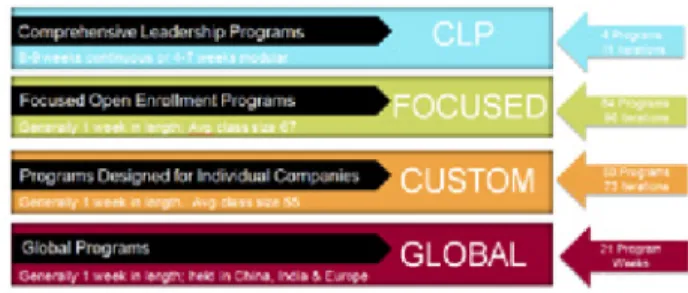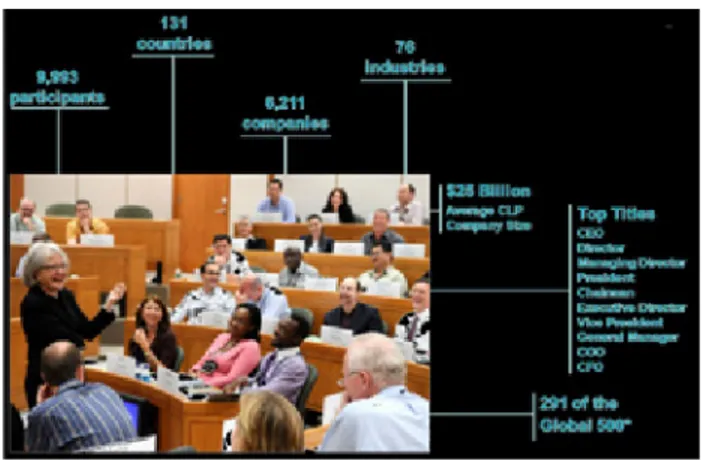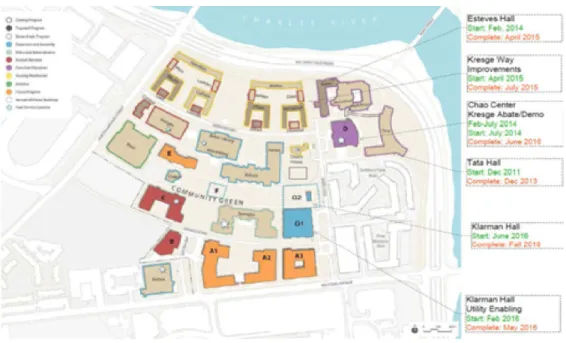Copyright © President & Fellows of Harvard College.
E X E C U T I V E S U M M A R Y
J u n e 2 – 3 , 2 0 1 5
OVERVIEW
HBS alumni clubs are encouraged to collaborate with various units at HBS. The clubs network is an impor-tant resource for advancing the objectives of several areas of HBS, such as MBA Admissions’ outreach and Executive Education’s recruitment efforts. Likewise, vari-ous units have value to offer alumni, such as Career & Professional Development’s new programming for alumni and Executive Education’s discounted tuition for alumni. In short, there is much value to be gained by both clubs and the various School divisions when they can help each other. Such collaboration only strengthens the broad HBS community of which we are all a part.
CONTEXT
Representatives from Executive Education, the MBA program, MBA Admissions, Career & Professional Development, and Campus Development discussed their activities, objectives, and the opportunities they see for their teams and HBS alumni clubs to collaborate.
PRESENTERS: MARY LOU BARNEY,
Managing Director, Executive Education
BRIT DEWEY, Executive Director, MBA Program, MBA 1996
JILL FADULE, Senior Admissions
Board Member, Outreach Director, MBA Admissions
LAUREN MURPHY, Director,
Career & Professional Development
ANDY O’BRIEN, Chief of Operations, Campus Development, AMP 188
C L U B L E A D E R S H I P C O N F E R E N C E 2 0 1 5 | 3 QUICKFIRE UPDATES FROM SCHOOL UNITS
KEY TAKEAWAYS
HBS Executive Education and the alumni clubs are connected by shared interests.
The four main parts of HBS—Executive Education, the MBA program, the HBR publishing arm, and external relations, of which alumni clubs are part—have historically been separate silos. This is decreasingly the case. There is growing recognition of the overlap, including how they share resources in pursuit of a common commitment to lifelong learning. The alumni clubs play a critical role in this commitment by extending the value of an HBS edu-cation throughout a graduate’s life and nurturing lifelong ties to HBS.
“Executive Education overlaps other parts of the School, using the same faculty, the same cases, and the same pedagogy. . . . It leverages a lot of the MBA program’s elective curriculum.”
—Mary Lou Barney
Graduates of three ExEd management programs auto-matically earn full HBS alumni status (Owner/President Management program (OPM), Advanced Management Program (AMP), and General Management Program (GMP)), while Program for Leadership Development (PLD) graduates would first have to complete an addi-tional 10-day module to be considered HBS alumni. ExEd produces about 900–1,000 new alumni each year, whose names are included in the lists supplied to the geographic clubs.
Figure 1. Lifelong learning is at the center of HBS’s four “silos”
Some facts about ExEd:
• HBS Executive Education comprises about 130 pro-grams annually, of four types (Figure 2).
Figure 2. ExEd offers nearly 130 programs annually of four types
• Three-quarters of ExEd programs feature open enroll-ment. That is a strategic choice driven by faculty’s desire for a diversity of voices to help test theories and ap-proaches. Conversely, virtually all other schools’ execu-tive education programs are mostly custom-designed for specific companies. The open nature of HBS programs requires more investment in recruitment and marketing. • The student body is much more diverse than the MBA program’s in every aspect except for gender. ExEd is working hard to attract more women.
• Recent construction has transformed the area of campus devoted to Executive Education. Tata, an architecturally striking residence hall, has been open for a year and a half; Esteves Hall (the former Baker Hall) just opened (May 2015); and the Chao Center, a new dining facil-ity, is under construction (due to open summer 2016).
Figure 3. Statistics on enrollees attest to the diverse mix of executives ExEd attracts
Some ways in which alumni clubs and ExEd might col-laborate include:
• Co-sponsor events
• Leverage ExEd alumni and past participants in club programs
• Provide market feedback on topics of interest to execu-tives to inform ExEd curriculums
• Align ExEd mission programs to club missions/service activities
• Contribute ideas on how ExEd can attract under-served populations (e.g., women, African Americans)
• Come home to HBS—club leaders and members are encouraged to enroll in programs.
The MBA program’s strategic goal is to differentiate the brand via an ever-improving value proposition. What keeps executive director Brit Dewey up at night are these questions: What is the value proposition of students’ large investment in a two-year, full-time MBA program? How can HBS ensure that the ROI to its students is com-pelling and enabling enough to justify such a “product acquisition?”
HBS does not want to assume that its offering will remain
In the interest of differentiation, HBS continues to en-hance the value its MBA students realize, both while they are students and for their lives. The most recent innova-tions and initiatives undertaken include:
• Curricular innovation. A new pedagogy—the FIELD method—that complements the case method has been adopted and is being refined. It is designed to ensure that HBS graduates not only analyze well, as the case method demands, but also execute well, which real life demands. Students spend time in a range of global locations and work collaboratively in teams of five or six. Teams present ideas for new products and services directly to business leaders in emerging markets, and actually cre-ate products and implement services in a year-long field immersion experience.
“This is a really exciting period in HBS’s history. . . . [We’re] preparing students not only to be analytically compelling but to be really grounded in what execution means.”
–Brit Dewey
Other recent curricular innovations include:
– HBX CORe, an online course offered pre-matricula-tion to help prepare HBS students, particularly those who have not had formal business education. – Bridges, an elective course for the few weeks after
formal coursework ends and before graduation. It is designed to help HBSers transition from being stu-dents to being alumni, and engaging with the alumni clubs network is part of the program.
• Community and culture. Brit Dewey has spent a great deal of time thinking about the different identities HBS students have and how HBS can better support them by creating environments where they can be their best selves. Initiatives address sexual violence awareness among students; health and wellness, including mental health issues; and inclusion, e.g., addressing issues raised by students’ wealth disparities.
• Career and professional development. New programming has been launched to support students and alumni. • Admissions and financial aid. An ideal time to pitch the
C L U B L E A D E R S H I P C O N F E R E N C E 2 0 1 5 | 5 QUICKFIRE UPDATES FROM SCHOOL UNITS
KEY TAKEAWAYS
interview experience, when ears are attuned for any-thing HBS people have to say. Additionally, PEEK, a program being piloted this summer, will bring tar-geted groups of college students to campus for three days to “get a peek at” the HBS experience. Finally, a new summer fellowship program will enable financially pressured students who would normally decline unpaid internships, even if educationally valuable, to be able to accept these (a typically overlooked need for aid but an important one to address).
Admissions’ outreach is critical to ensuring a rich diversity of applicants and matriculated students; alumni clubs are a part of this effort.
The high numbers of applicants to Harvard Business School (about 9,700) relative to spots in the class (920–930) attests to the continued relevance of the Harvard MBA, though the School never wants to take that for granted.
About 20% of applicants are invited for interviews and exposed to programming to help them understand what being an HBS student would mean. About half of those interviewed are admitted. Some 89%-90% of admitted stu-dents choose to matriculate, which is a very high yield. But yield is about more than numbers; it’s about ensuring that admitted students have the information necessary to make the right decision. Admissions credits alumni clubs in facilitating admitted students’ decisions and keeping yield so high.
“We bring to bear all the resources we have to give ad-mitted students the information they need to make the best possible decision. . . . [T]hanks in large part to your efforts, about 89%–90% accept our offer.”
—Jill Fadule
The Admissions Department’s outreach initiatives help keep rich diversity in the applicant pool, as required for classroom success of the case method. Admissions’ year-round outreach efforts represent multiple formats, in-cluding webinars, class visits, campus tours, on-campus information sessions, full-day open houses, off-campus presentations, fairs, Forte events (targeting women in busi-ness), college visits, and social media (the newly launched blog: MBA Voices). Ways that alumni clubs can help in outreach efforts include:
• Identify corporate venues in your area for outreach ac-tivities; using corporate meeting space is preferable to renting hotel space.
• In networking, encourage early career leaders to engage with HBS.
• Spread the word that HBS wants applications; do not let people “self-select out” because they think they do not fit the profile of an HBS student.
Clubs can spread the word about Career & Professional Development’s expanded alumni programming.
The Career and Professional Development (CPD) team recently expanded its career development services for alumni, including coaching, web resources, and program-ming. Over the past year, the focus has been on getting the word out via a 30-city tour.
“We’ve received amazingly positive feedback from alumni on the road, and we want to get the word out more.”
—Lauren Murphy
The new initiatives include:
• Career Reboot Camp, a successful program offered in New York, San Francisco, and Boston. Working in small groups, alumni develop their action plans for the next steps of their careers.
• LinkedIn profile makeovers, offered at reunions. • Webinars focused on a wide range of alumni career
needs and interests.
• A High Impact Talent (HIT) program being piloted in New York and Boston.
• Part-time and temporary/consulting jobs postings. • Alumni Networking Resume book.
In the works are:
• Expanded and improved online resources, with a new site planned for fall 2015.
• Coach-facilitated, virtual job search teams. • Career advisors (alumni to student).
CPD welcomes opportunities to collaborate with alumni clubs and has identified a few ways:
• CPD could advertise club programs on its careers website.
• Clubs could advertising CPD programs and services in their newsletters and on websites.
• They could work together to customize alumni programs.
Lauren Murphy welcomes more collaboration ideas and is hoping to start an ongoing dialogue with the clubs that will help CPD develop more alumni-focused services.
Figure 4. HBS campus master plan and construction timeline
Forklifts are giving campus a facelift.
HBS’s campus has grown dramatically over the past de-cade, keeping Andy O’Brien’s seven-person operations team busy as it pursues its mission of managing the proper environment for the School via operational excellence. In this session’s concluding segment, the operations chief (and recent Advanced Management Program graduate) recapped the construction projects that are transform-ing the campus to materialize the master plan (Figure 4). Alumni in attendance peppered him with questions about such things as where the parking lots will be (they will be replaced by basement parking garages beneath new buildings).


